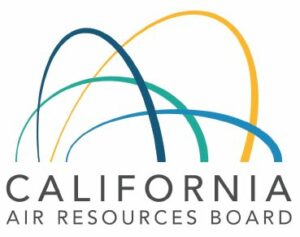Written on: March 1, 2024 by Doug Raymond
NYSDEC replaces CARB this month as the agency at the top of the list to deal with…
NYSDEC
The New York State Dept. of Environmental Conservation (NYSDEC) proposed amendments to Hydrofluorocarbon Standards & Reporting, its Rule 6 NYCRR Part 494. Even though the U.S. Environmental Protection Agency (EPA) has adopted the Technology Transition Final Rule under the American Innovation & Manufacturing Act (AIM), which regulates hydrofluorocarbons (HFCs) in Aerosol Products and Small Containers of Automotive Refrigerant, the State of New York, in their wisdom, is proposing prohibitions, reporting and other requirements for HFCs.
Aerosol Products
The current regulation in New York has the restrictions from EPA’s Significant New Alternatives Policy (SNAP) Rules 20 and 21. These are the restrictions for the use of HFC-134a that we have been dealing with since 2016. In New York, the restriction date was Jan. 1, 2021. The good news (I guess) is that NYSDEC has proposed to amend the restrictions to include the recently adopted Technology Transition rule described above. New York copied the upcoming restrictions that take effect Jan. 1, 2025, and Jan. 1, 2028. Why New York felt it needed to propose these amendments is a mystery to me.
One piece of the proposal that was not expected was a restriction to any regulated substance with a global warming potential (GWP) with a value greater than 10 starting Jan. 1, 2034. Typically, the cutoff is 150 GWP. Thus, this will impact the use of HFC-152a; this will indeed be the first regulation to affect HFC-152a. Also, hydrofluoroolefins (HFOs) are considered “regulated substances,” as well. Thus, be sure to check the GWP of any propellant or solvent that is an HFO.
Small Containers of Automotive Refrigerant
NYSDEC is also proposing to prohibit the sale of Small Containers of Automotive Refrigerant containing virgin regulated substances beginning Jan. 1, 2027. This is a good start; however, we should try to align New York with California for consistency.
While the proposal for Aerosol Products is mostly consistent with EPA, there is no need for these amendments. The fact that the proposal affects HFC-152a in the future is not a good thing. To reiterate, consistency with California on Small Containers of Automotive Refrigerant is a must.
There will be two virtual public comment hearings on the proposal on March 13, 2024 (at 2 p.m. and 6 p.m. EDT). Written comments are due March 19, 2024. The plan is to coordinate comments between the National Aerosol Association (NAA) and the Household & Commercial Products Association (HCPA). In addition, I encourage any companies that may consider commenting to do so, as well.
CARB
From discussions with California Air Resources Board (CARB) staff, it appears as the long-awaited survey is (you guessed it) delayed yet again. Staff believes the survey will be out in the Spring of 2024, which could mean June. This survey will be the beginning of the next rulemaking for volatile organic compound (VOC) regulation. Remember, CARB staff has committed to 20 tons per day (tpd) of VOC emission reductions for Consumer Products by 2035.
As part of this commitment, CARB staff will likely be utilizing the Concept of Reactivity and developing a new strategy to develop reactivity limits for product categories. This is an ongoing process.
Nevada
Clark County has proposed numerous rules for different sources—six manufacturing sources, to be exact. However, there is no proposal yet on Consumer Products. We need to monitor this closely.
Other States
There is no news concerning Consumer Product VOC regulations in either Oregon or New Jersey; we will continue to monitor them. SPRAY